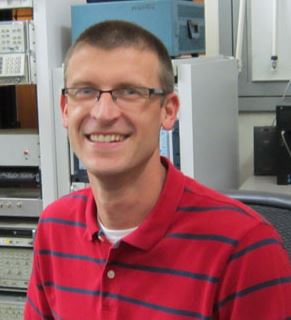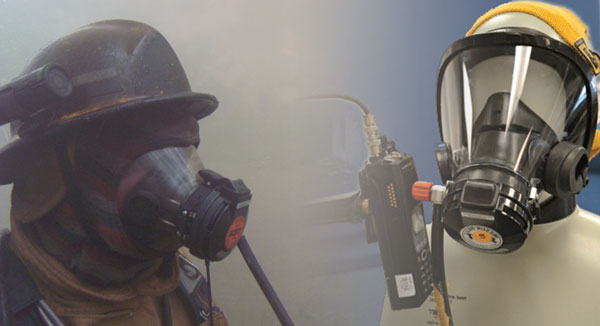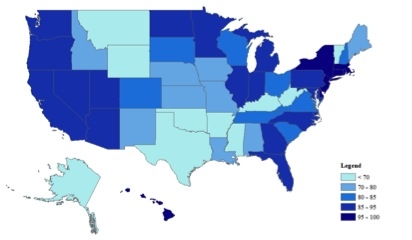NTIA Blog
Time to End the Leap Second?
We all rely on clocks to figure out when to leave for work, go to school and to do a myriad of other activities that make up our daily lives. But how we keep track of time on those clocks is a subject of debate among the nations of the world. Most countries use the international standard time scale called Coordinated Universal Time (UTC). The U.S. Commerce Department’s National Institute of Standards and Technology (NIST), NTIA’s sister agency, maintains the UTC time scale in the United States.
UTC is based on atomic clocks, which use the international definition of the “second” to keep highly accurate and very steady track of time. Atomic clocks have been used for time-keeping services since the 1950s. Traditional clocks are based on astronomical measures of the Earth’s rotation. The Earth’s rotation rate is slowing down over time, however, and the rate of that slowdown is irregular. To keep UTC in line with the Earth’s rotation, a second is added to UTC time when needed to ensure that the difference between traditional clocks and atomic clocks is less than a second. One of these seconds, a so-called “leap second,” was most recently added at the end of June. Since the leap second’s introduction in 1972, 26 leap seconds have been added to UTC to keep the world’s clocks in sync with the Earth’s rotation.
Spotlight on NTIA: Billy Kozma, computer engineer, Institute for Telecommunication Sciences
This post is part of our “Spotlight on NTIA” blog series, which is highlighting the work that NTIA employees are doing to advance NTIA’s mission of promoting broadband adoption, finding spectrum to meet the growing demand for wireless technologies, and ensuring the Internet remains an engine for innovation and economic growth.
 Billy Kozma has lived on both the East and West coasts but appears to have found a place that finally feels like a good fit in Boulder, Colo. Kozma, a computer engineer at the Institute for Telecommunication Sciences, joined NTIA’s research lab in Boulder two-and-a-half years ago after working for more than two years as a computer engineer for the Space and Naval Warfare Systems Center in Washington, D.C.
Billy Kozma has lived on both the East and West coasts but appears to have found a place that finally feels like a good fit in Boulder, Colo. Kozma, a computer engineer at the Institute for Telecommunication Sciences, joined NTIA’s research lab in Boulder two-and-a-half years ago after working for more than two years as a computer engineer for the Space and Naval Warfare Systems Center in Washington, D.C.
Kozma said he just couldn’t get used to living in the Washington, D.C., area and longed to move back West. Kozma lived in the Seattle area during a nearly two-year stint as a software engineer at Microsoft’s headquarters in Redmond, Wash. While he loved living in the Seattle area, Kozma and his wife wanted to be closer to their Pennsylvania-based families, which is how he landed in Washington, D.C. In Boulder, he appears to have found a happy medium between his desire to be in a less populated place close to nature while not being too far from family.
Introducing NTIA Data Central
Balancing Innovation and IP to Advance the Digital Economy
As computers become smaller, faster, and more affordable, they are transforming nearly every aspect of American life, giving us access to millions of digital books, songs, and movies. And machines — from phones to cars and even medical devices — are smarter, safer, and more efficient thanks to computers and the software that powers them. With these advances come important policy questions, including how best to simultaneously promote innovation and the free flow of information while protecting intellectual property.
Every three years, the Commerce Department’s National Telecommunications and Information Administration (NTIA) shares its views with the United States Copyright Office regarding proposed exemptions from the Digital Millennium Copyright Act’s (DMCA) prohibition against circumventing copyright protection technologies. These exemptions are vital to enabling innovation and free expression in the digital age. They help students learn by making fair use of clips from movies, make e-books accessible to the print-disabled, and allow changing the settings on mobile phones so that they can be used with different wireless carriers.
New Research Details Ways to Improve Voice Quality of Emergency Communications
One of the most challenging aspects of public safety communications is maintaining audio quality in the harsh noise environments in which fire fighters, police officers and other first responders operate. The National Public Safety Telecommunications Council (NPSTC), a federation of public safety organizations, has identified audio quality as a critical requirement, noting that first responders have an immediate and sometimes life-and-death need to understand exactly what is being communicated during an emergency. Today, the Institute for Telecommunications Sciences (ITS), NTIA’s research laboratory in Boulder, Colo., has released a new report that describes an effort to identify which digital speech and audio technologies are best-suited for mission-critical voice communications over a fourth generation (4G) wireless network using cellular infrastructure.

ITS Engineer conducting research highlighted in new report
NTIA Employees Win Top Departmental Awards
Please join me in recognizing the NTIA employees who at a special ceremony this week received Department of Commerce Gold and Silver awards for their outstanding contributions.
Here are the NTIA honorees:
Gold medal award winners:
Frank Sanders, Robert Achatz, John Carroll, Michael Cotton, Roger Drake, Geoffrey Sanders (Institute for Telecommunication Science (ITS)) and Robert Sole (Office of Spectrum Management (OSM)) - This group is recognized for conducting and publishing a major electromagnetic compatibility study that advanced the Department’s efforts to make additional spectrum available for wireless commercial broadband services. The results were used to develop new rules enabling new spectrum sharing in the 3.5 GHz band between federal agencies that already use the band and commercial entities that intend to deploy new systems in the band.
Silver medal award winners:
Expanding the Benefits of Broadband in New England
The National Telecommunications and Information Administration’s BroadbandUSA team, together with Next Century Cities, a nonprofit initiative of over 100 mayors and community officials dedicated to ensuring the availability of next-generation broadband Internet for all Americans convened a productive broadband workshop yesterday in Portland, Maine to explore ways to close the digital divide and expand broadband capacity throughout the New England region. The Digital New England Summit brought together about 250 broadband experts, community leaders and state and federal officials, including U.S. Senator Angus King, for this day-long gathering.
The event was the third in a series of regional workshops that NTIA is hosting across the country as part of its BroadbandUSA program, which is helping communities expand their local broadband capacity and use. The new initiative builds on lessons learned and best practices from NTIA’s successful broadband grant programs, which officially come to a close tomorrow. Funded from money from the 2009 Recovery Act, NTIA invested more than $4 billion in roughly 230 projects across the country that have built critical network infrastructure, opened or upgraded public computer centers and established broadband adoption and digital inclusion programs. Our State Broadband Initiative Program invested another $300 million to help states collect broadband data for the National Broadband Map and expand their statewide broadband capacity.
Guiding Communities to Broadband Funding Sources
As President Obama observed earlier this year, “high-speed broadband is not a luxury, it’s a necessity.” So much of how we live our daily lives – from searching for a job to accessing health data – has moved online, which requires a high-speed broadband Internet connection. While there is broad consensus on the need to ensure Americans have access to broadband, figuring out how to fund it is still a major challenge for many communities.
In the last six years, NTIA has made great progress in expanding broadband access and adoption through our broadband grant programs, funded by the 2009 American Recovery and Reinvestment Act. While these grants are now coming to an end, we recognize there is still more work to do, and earlier this year we launched BroadbandUSA to continue this momentum. Leaning on the expertise gained from managing our $4 billion grant programs, BroadbandUSA provides communities with technical and strategic advice on how to expand broadband access and adoption.
Reflections on the IANA Stewardship Transition Process
With the closing of the public comment period, we at NTIA continue to be impressed by the dedication and hard work of the many stakeholders involved in planning the transition of NTIA’s stewardship of the Internet’s domain name system. We are pleased to see so many stakeholders participate in the crafting of the plan to transition NTIA’s role related to the DNS technical functions, known as the IANA functions. Everyone that benefits from the Internet has a stake in the success of the multistakeholder model and a voice in this process.
Today it is clear that there is a substantial amount of consensus support for the goals and principles established by the two working groups that have led the planning efforts since last year. It is equally apparent that there is consensus on many of the specific elements of the plans that were presented for comment to the global Internet multistakeholder community.
However, the comments also reveal that stakeholders have not reached consensus on all the specific tools that have been proposed to enhance the accountability of ICANN, the IANA functions operator, and that there are many questions still to be answered, both about the substance of the overall plan as well as its implementation, before the community will be ready to submit a final proposal to NTIA.
This week the Cross Community Working Group (CCWG) is meeting in Santa Monica, Calif., to continue work on how to enhance the accountability of ICANN in the absence of its contractual relationship with NTIA.
Strengthening Our Digital Infrastructure Is Key to America’s Path Forward
For our country to take full advantage of the promises of innovation, America’s path forward must ensure our people and ideas can move at the rapid pace of the 21st century. At a time when technological innovation and economic growth go hand-in-hand, our digital infrastructure is central to our competitiveness.
That is why the U.S. Department of Commerce, with agencies across the Administration, is working to foster continued investment in broadband networks. Over the past six years, we have made substantial progress in connecting communities and closing the digital divide through the National Telecommunications and Information Administration’s (NTIA) $4 billion broadband grant program. Projects funded through this program have built or upgraded 114,697 miles of network infrastructure, connected 25,684 schools, libraries and other anchor institutions, and produced 671,585 new household subscriptions. Still, we recognize that there is more work to be done to ensure that no one is left behind in the digital revolution.

Percentage of Households with Access to Download Speeds of 25 Megabits per Second or Greater, 2013
